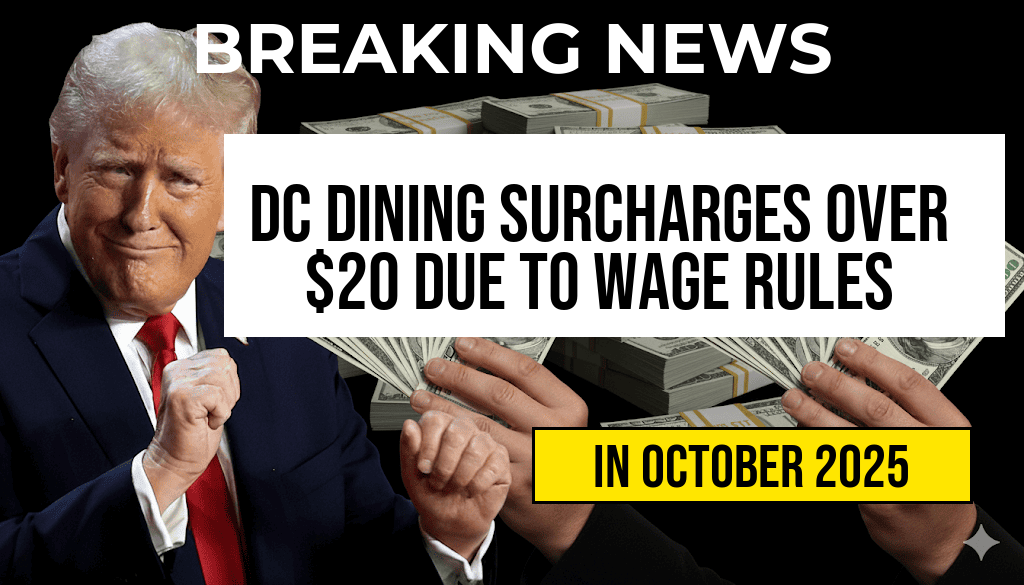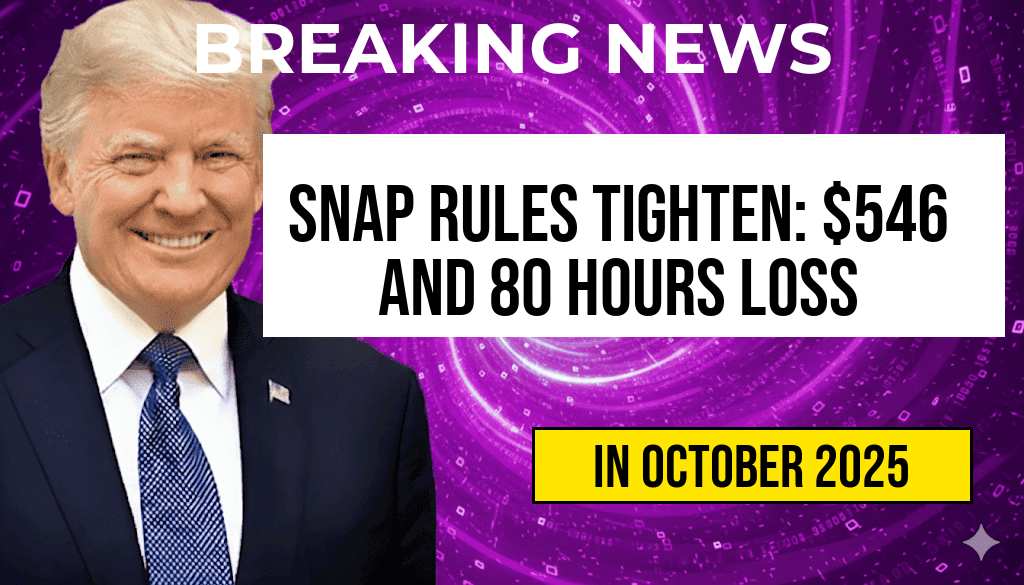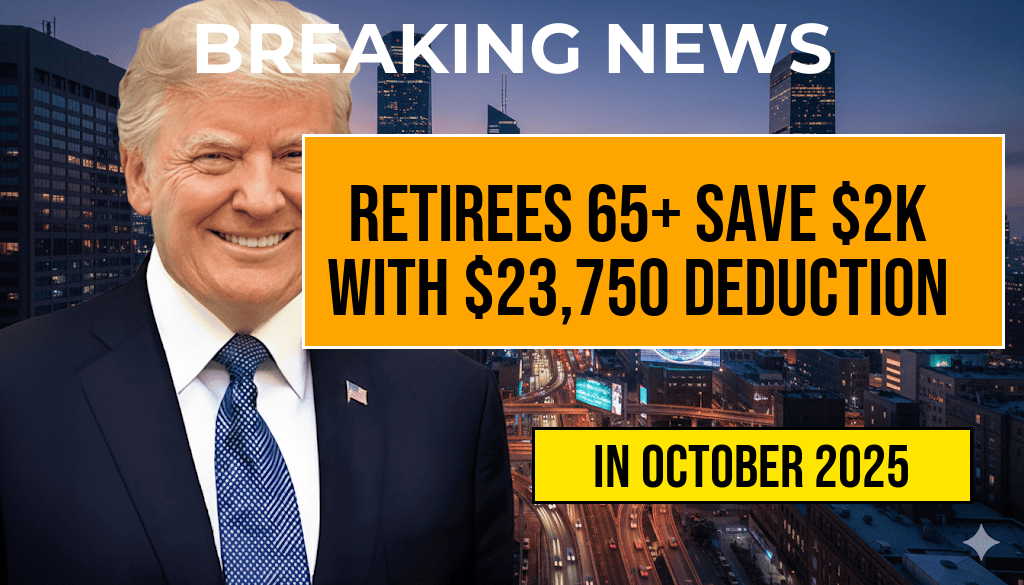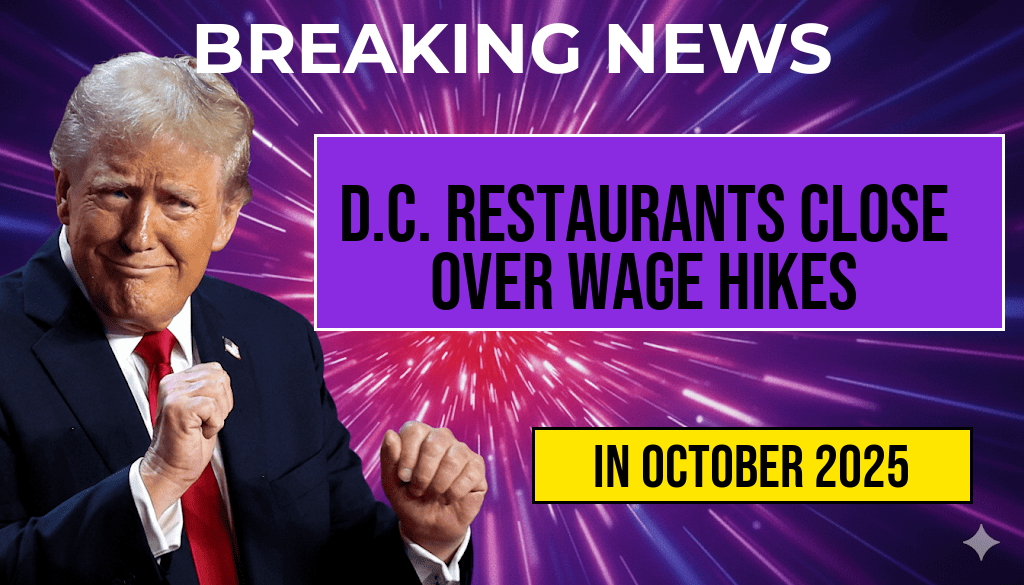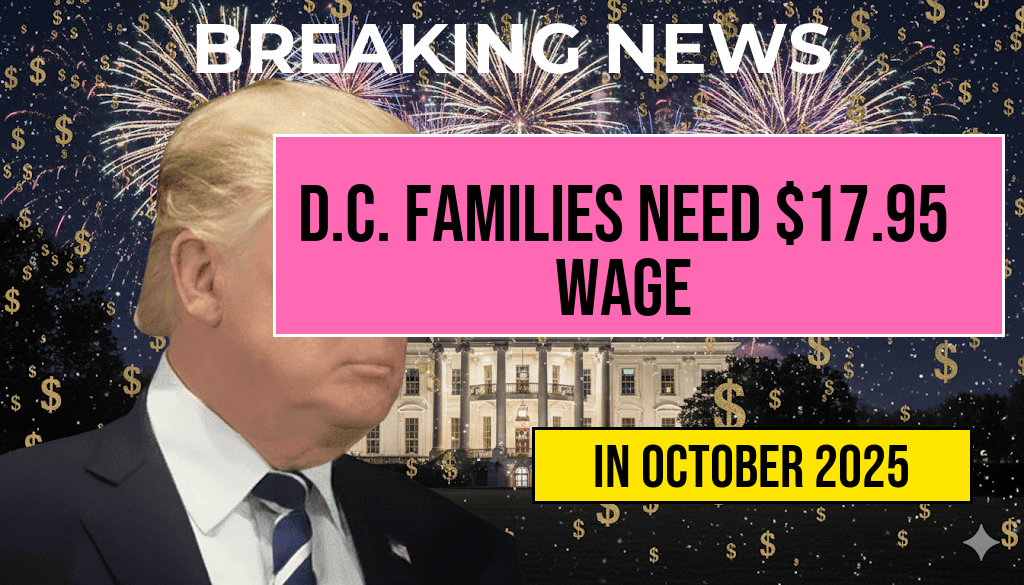DC Dining Surcharges Top $20 Per Check as Wage Laws Reshape Restaurant Bills
Dining out in Washington, D.C., has become noticeably more expensive for many patrons, with some checks now exceeding $20 solely from surcharges related to recent wage regulation changes. As the city enforces stricter labor laws aimed at increasing minimum wages and expanding benefits for restaurant workers, many establishments are passing on these costs through mandatory surcharges. Consumers are noticing the added charges, which are often itemized separately from the standard tip, leading to confusion and, in some cases, frustration. This shift reflects broader efforts to improve living standards for hospitality workers, but it also raises questions about transparency and the future of restaurant pricing in the nation’s capital.
Wage Regulations Drive Surcharge Implementation
Over the past year, Washington, D.C., has implemented several labor law reforms targeting the restaurant industry. Notably, the city has increased the minimum wage for tipped workers, aligning it with the general minimum wage, and mandated paid sick leave and other benefits. These measures aim to create fairer pay structures but impose additional operational costs on restaurant owners.
Many establishments have responded by introducing service surcharges, which are added to bills to offset higher wages and compliance costs. Unlike gratuity, which is discretionary, these surcharges are often mandatory and clearly itemized, making consumers more aware of their impact on the total bill. A recent survey by the National Restaurant Association indicates that approximately 40% of D.C. restaurants now add surcharges exceeding $2 per check, with some reaching upwards of $20 during peak hours or for larger parties.
How Surcharges Are Calculated and Applied
| Surcharge Type | Typical Amount | Application Method |
|---|---|---|
| Percentage-Based | 3%–10% of the total bill | Applied as a line item; varies with bill size |
| Flat Fee | $2–$20 per check | Fixed amount added regardless of bill total |
| Tiered Surcharge | Varies based on party size or time of day | Additional fees during busy hours or for large groups |
For example, a restaurant may add a 5% surcharge on all bills to help cover increased wages, or impose a flat $15 fee for parties of six or more. These charges are often presented at the bottom of the check, alongside the tip line, allowing diners to see how much extra they are paying beyond the base price of their food and drinks.
Impact on Consumers and Business Transparency
While surcharges are intended to ensure fair compensation for workers, they have become a point of contention among diners. Some perceive the additional fees as opaque, especially when they are not clearly explained or when they significantly inflate the final bill. Consumer advocacy groups argue that transparency is essential to maintaining trust, urging restaurants to specify the reason for surcharges and how they are calculated.
For residents and visitors alike, the surprise of a $20 surcharge on a modest meal can be jarring. “I understand the need to pay higher wages, but I wish it was more transparent from the start,” said Emily Rodriguez, a frequent visitor to D.C. eateries. “It feels like the cost of dining out is just increasing without clear communication.”
Economic and Industry Reactions
Restaurant owners acknowledge that wage increases have put pressure on profit margins, prompting some to raise menu prices across the board or implement surcharges as a targeted solution. According to a report by Forbes, many establishments are balancing the costs of labor reforms with the need to remain competitive and accessible to diners.
Meanwhile, industry groups warn that if surcharges become overly burdensome or perceived as unfair, they could discourage patronage or lead to a decline in the number of dining options available in the city. There is ongoing debate about how best to support workers without alienating customers.
Legal and Policy Considerations
Legal experts note that surcharges are generally permissible under federal and local law as long as they are disclosed upfront and not disguised as tips. However, there is an ongoing conversation about whether these fees should be categorized differently or regulated more strictly to prevent misrepresentation.
The D.C. Department of Consumer and Regulatory Affairs (DCRA) has issued guidelines encouraging restaurants to clearly communicate surcharges and the reasons behind them. Consumers are advised to review bills carefully and ask staff about any additional charges they do not understand.
Looking Ahead
As Washington, D.C., continues to adjust its labor policies, the financial landscape for both restaurants and diners is evolving. While surcharges exceeding $20 per check are still relatively uncommon but increasingly prevalent during busy hours or for larger parties, the long-term effects remain uncertain. Industry observers suggest that ongoing dialogue between policymakers, business owners, and consumers will be crucial to establishing a fair and transparent pricing framework that supports both workers and the city’s vibrant dining scene.
For more details on labor law reforms and restaurant industry trends, visit Wikipedia’s wage labor page and Forbes’ coverage on restaurant economics.
Frequently Asked Questions
What are the recent changes in dining surcharges in Washington, D.C.?
Recent reports indicate that DC dining surcharges are exceeding $20 per check, reflecting new wage regulations aimed at increasing wages for restaurant staff.
How do wage regulations affect restaurant bills in D.C.?
Wage regulations in D.C. have led to higher labor costs, which restaurants often pass on to customers through increased surcharges and menu prices.
Why are surcharges exceeding $20 per check?
The surcharges are surpassing $20 due to the combined impact of minimum wage increases and regulatory compliance costs that restaurants are trying to offset.
Are these surcharges mandatory for customers?
In most cases, surcharges are added voluntarily by restaurants to cover higher wage expenses, but customers should check the bill for transparency regarding these charges.
How can I understand or question these surcharges when dining in D.C.?
Customers are encouraged to review their bill carefully and ask restaurant staff about surcharges to ensure clarity on additional fees related to wage regulations.




